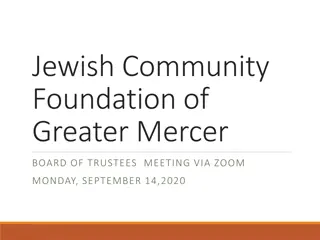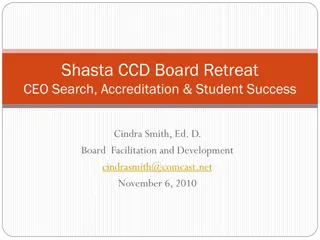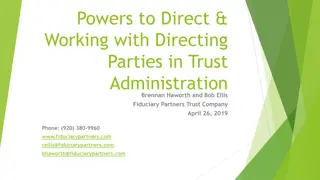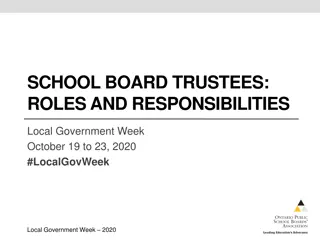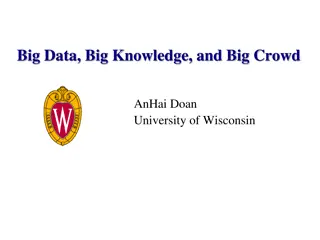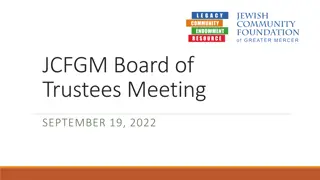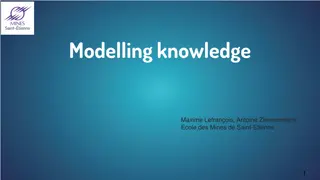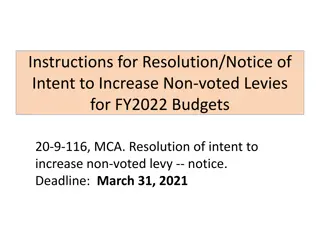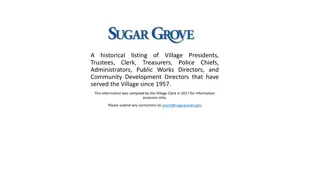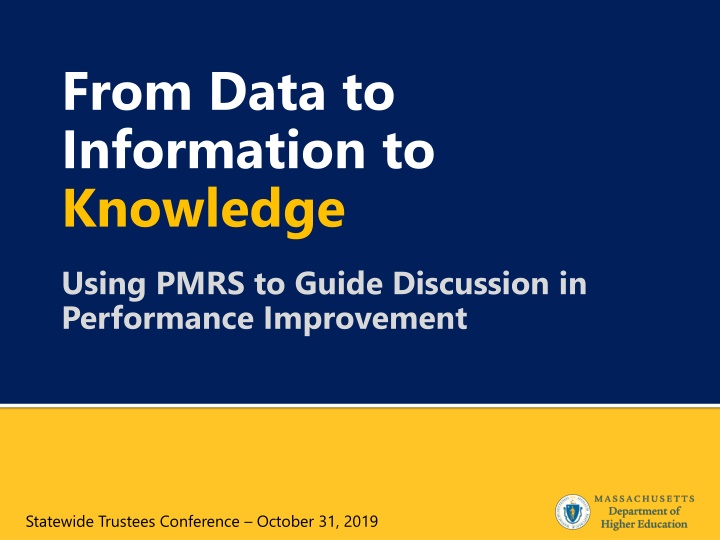
Transforming Data into Knowledge for Performance Improvement
Explore the journey from data to information to knowledge through the use of the Performance Measurement Reporting System (PMRS) in guiding discussions for statewide performance improvement. Discover the importance of prioritizing evidence over intuition and putting data at the forefront of decision-making. Dive into current work focused on accelerating campus adoption of data analytics and enhancing the quality and scope of analytic resources. Learn how data, when transformed into understandable information, becomes a powerful tool for guiding decisions in the best interest of students and families. Follow step-by-step instructions on scanning performance dashboards to gain key insights and improve student success metrics.
Download Presentation

Please find below an Image/Link to download the presentation.
The content on the website is provided AS IS for your information and personal use only. It may not be sold, licensed, or shared on other websites without obtaining consent from the author. If you encounter any issues during the download, it is possible that the publisher has removed the file from their server.
You are allowed to download the files provided on this website for personal or commercial use, subject to the condition that they are used lawfully. All files are the property of their respective owners.
The content on the website is provided AS IS for your information and personal use only. It may not be sold, licensed, or shared on other websites without obtaining consent from the author.
E N D
Presentation Transcript
From Data to Information to Knowledge Using PMRS to Guide Discussion in Performance Improvement Statewide Trustees Conference October 31, 2019
From Data to Information to Knowledge Our Mission DHE s Research & Planning team exists to: Drive organizational transformation by prioritizing evidence over intuition, with data at the center of every conversation 2
From Data to Information to Knowledge Current Work Accelerating campus adoption of data analytics Collaborative Tableau purchase & services Community of practice Enhancing quality and scope of analytic resources Quality and scope of data, including longitudinal merges with other state agencies (early ed through workforce) Data tools for internal and public use, such as public-facing Performance Measurement Reporting System (PMRS) 3
By itself, data has no value. When data is put into a form that is easily understandable, it becomes information. When information is used to guide the decisions that are in the best interest of students and families we serve, it becomes knowledge. Stan Beckelman Former President, Boeing Information Services Board Member, Center for Educational Effectiveness 4
From Data to Information to Knowledge Step One: Scan Go to: www.mass.edu/pmrs Scroll down and select your institution Under Performance Dashboard: Key Insights, open Student Success & Completion dashboard 5
From Data to Information to Knowledge Step One: Scan Get a 10,000-foot view of your overall Student Success landscape On which metrics does your institution appear to perform well relative to the comparison? On which metrics does your institution appear not to perform well relative to the comparison? How has your institution s performance changed (or not) on each metric over time? 6
From Data to Information to Knowledge Step One: Scan Scroll down to Equity Lens Open Latinx vs. White and African American vs. White 7
From Data to Information to Knowledge Step One: Scan Get a 10,000-foot viewof your Student Success landscape for Latinx & African American students On what metrics do you see the desired shape? On what metrics do you see a different shape to the graph, and how would you describe the trend you observe? How does your institution s graph shape compare to the segment s on each metric? Desired shape: Both lines going up, but also converging 8
Step One: Scan Report Out 9
From Data to Information to Knowledge Step Two: Analyze Reflect on your observations from Step One What was confirmed by the data that you already knew? What surprised you about the data? What was missing or lacking in the data? What other comments do you have about the data? 10
Step Two: Analyze Report Out 11
From Data to Information to Knowledge Step Three: Synthesize Choose 1 2 observations about your institution s performance to investigate further Assemble a brief list of follow-up questions to bring back to campus to find out what is driving these observations Questions may relate to: Additional campus data and research Insight from faculty and administrators Institutional practices and policies Financial and resource considerations Relevant case studies / national research 12
Step Three: Synthesize Report Out 13







